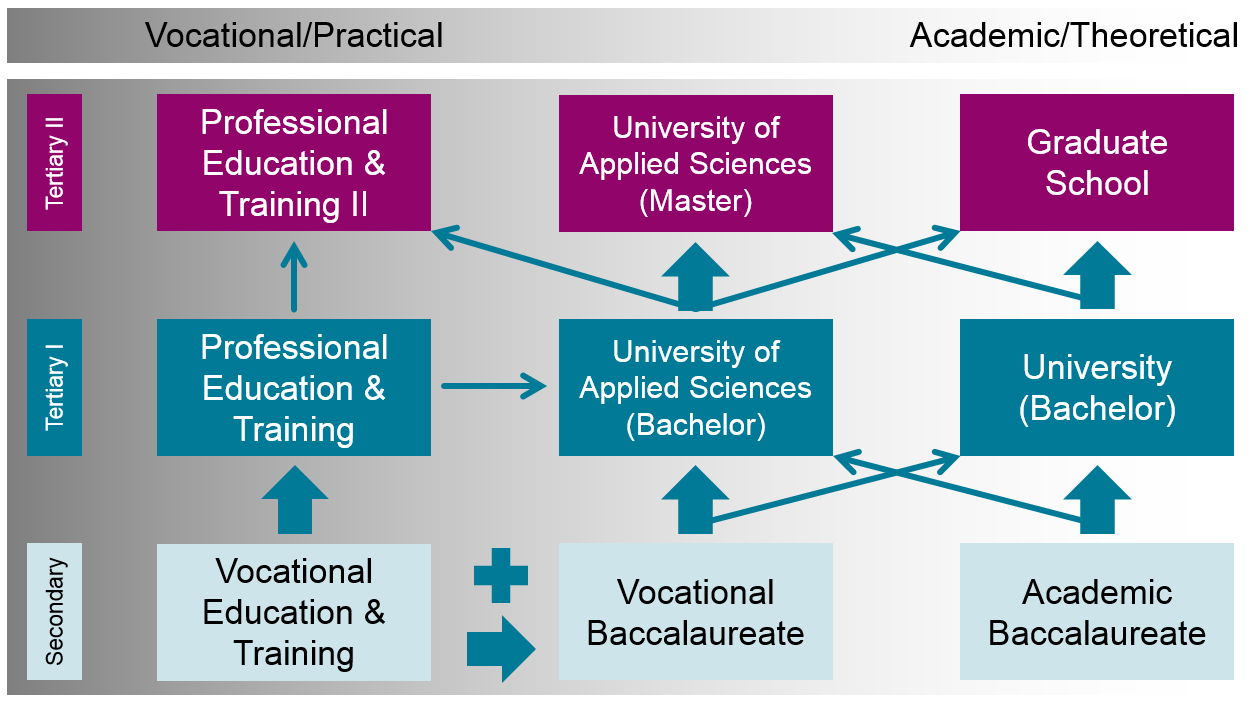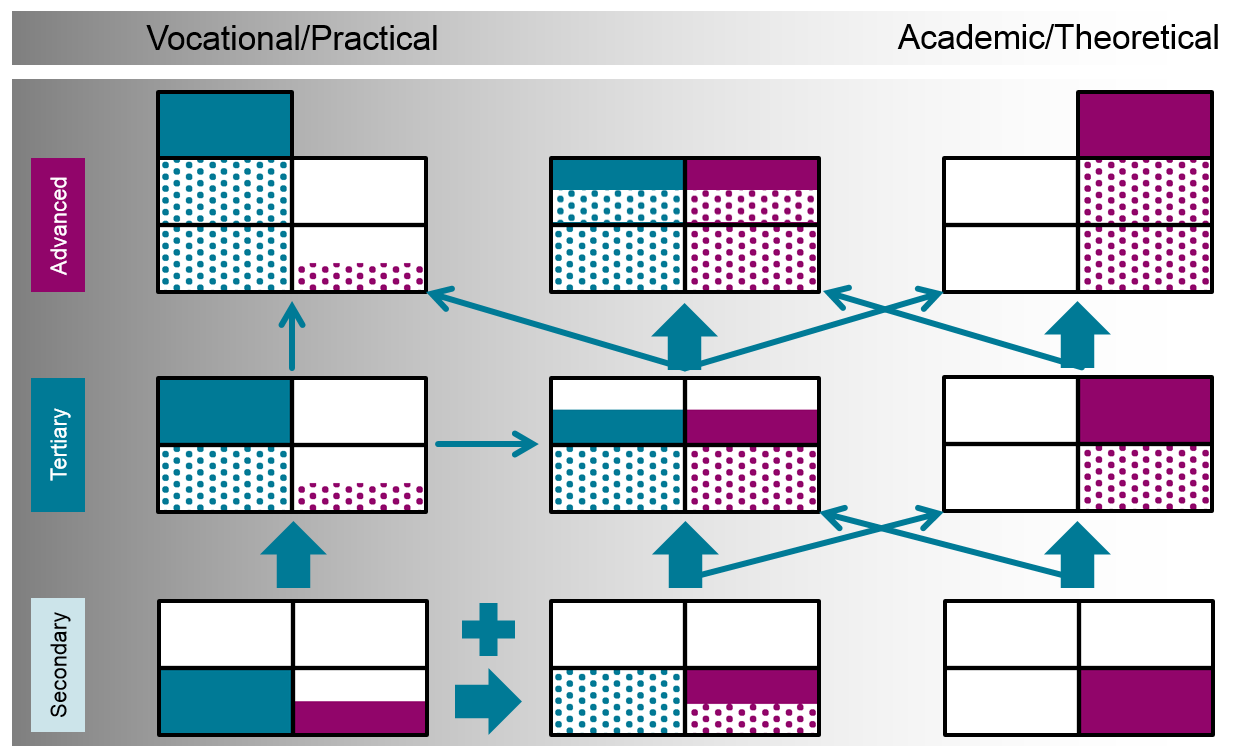Functional Differentiation and Skills
In an earlier post, we talked about how permeability is about not only having transition mechanisms among programs but also about having a variety of education and training programs in all levels and types. That post argues for permeability from the student point of view, and this one addresses why companies want a permeable system that offers multiple levels and types of education and training and ways to move through the system.
By Katie Caves
In an earlier post, we talked about how permeability is about not only having transition mechanisms among programs but also about having a variety of education and training programs in all levels and types. That post argues for permeability from the student point of view, and this one addresses why companies want a permeable system that offers multiple levels and types of education and training and ways to move through the system.
Figure 1 will be familiar from the previous post. It shows the Swiss system in a simplified format with all of the programs sorted into various levels (secondary, tertiary I, and tertiary II) and types (vocational, applied, and academic). It also shows how students can move from any starting point to any endpoint by following the progression routes and transition mechanisms available in the system. In short, this is an example of a permeable education and training system.
Figure 1: Swiss system of education and training, simplified
All of those options are obviously good for young people, and they are very good for businesses. In any company with more than one employee, there are diverse skill profiles among the workers. For example, a company producing widgets will need engineers to design the widgets, people who can build the prototype, someone who can design a process for mass-producing the widgets, people to work on production, sales staff, and administrators. All of those workers might be skilled, but their skill type and level combinations are different.
The engineer who designs the widget might have a master’s or PhD in engineering, which goes along with a lot of academic or theoretical skill (top right of Figure 2). The prototyper, on the other hand, might not have the theoretical knowledge to design the widget but can build a working widget from the plans because of her high degree of practical skills (top left of Figure 2). Managers and administrators need to work with and speak to both sides, so they probably need a mix of academic and practical skills, which puts them more in the applied category (middle and top of the middle column, Figure 2). Line workers on production will have practical skills, but probably at a lower level than the prototyper (middle and bottom of the left column, Figure 2). Salespeople can have diverse levels and types of skills depending on their products, clients, and job types. All of this illustrates that a company needs different skill profiles. An education and training system that provides multiple skill type and level combinations (Figure 2) is ideal for companies.
Figure 2: Example skill profiles for various education levels and types
Figure 2 has a lot going on, so I should explain more. The programs are the same as those in Figure 1. The boxes essentially represent the skill profiles of people who complete the various programs. Academic skills are pink and fill the right side of a box, and practical skills are teal and on the left. Higher skills are more advanced. Dot-fill skills are the ones required to get into a program. Solid-fill skills are the ones individuals learn in the program. So an apprenticeship (bottom left) teaches basic practical skills and some basic academic skills. Students can move right to the Vocational Baccalaurate to fill up the remaining basic academic skills, or focus on practical skills and move up through the levels of professional education and training. As another example, graduate school (top right) teaches very advanced academic skills and requires basic and advanced academic skills for entry.
If I am a company and I want to hire a worker with very advanced practical skills, I need the person on the top left with advanced PET skills. If I want someone with balanced practical and academic skills at a mostly advanced level, I need a University of Applied Sciences graduate. If I want lots of theoretical or academic skills, I need someone with a Bachelor’s degree or graduate degree from a university, on the right side of the image.
When there are not multiple levels and types of education—or when individuals cannot move among levels and types—the education and training system cannot help individuals acquire diverse skill profiles. That means companies have a very hard time finding the skill profiles they need (unless they really need university graduates), and have to rely on experience or other signals of ability when hiring. In these situations, the education and training system cannot serve individuals because they cannot use education and training to facilitate employment, and companies can neither find the people they need easily nor rely on the skills of new hires without formal training. Permeability—in terms of access and options—is good for companies at least as much as it is for individuals.

